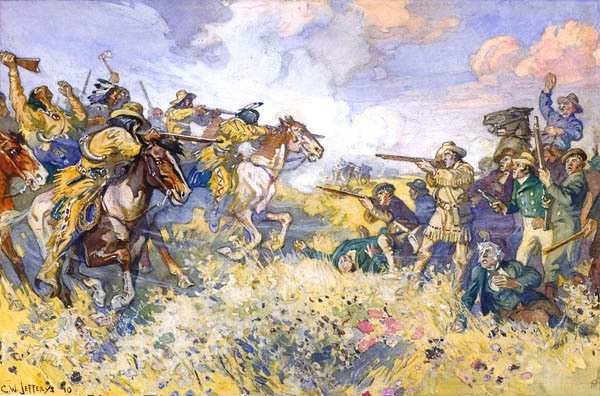- From the Red River Settlement to Manitoba (1812—70)
- Maps
- The Earl of Selkirk: The Colony’s Founder
- An Arduous Task, Marked by a Private War (1812—21)
- The Métis
- Indigenous Peoples
- Colonial Administration
- Maintaining Order and the Colony’s Defence
- Of Fur and Wheat: Subsistence and the Economy
- From Canoes to Railways: Transportation
- Life in Red River
- Missions and Religious Life
- Education, Health, and Social Assistance
- Arts and Culture
- The Press
- Intellectual and Scientific Life
- Winnipeg: The Emergence of an Urban Core
- Debating the Status of the Colony (1850—70)
- The Red River Rebellion and the Creation of Manitoba, 1869—70
- Suggested Readings on the Métis
An Arduous Task, Marked by a Private War (1812–21)

Source: Courtesy of Wikimedia Commons
A clerk, recruiting agent, and administrator, Archibald McDONALD assisted in the birth of the Red River colony and was soon faced with a situation that threatened the settlers’ security:
“Archibald McDonald was enlisted in early 1812 by Lord Selkirk
“Before his departure from Great Britain, McDonald had been appointed to the Council of Assiniboia, a body created by Selkirk to aid the colony’s governor, Miles
The first settlers had to cope not only with a harsh environment, but also with the repercussions of a bitter feud, known as the pemmican war, between the Hudson’s Bay Company (HBC) and the North West Company (NWC). People were killed during this private war, as related in the biography of fur trader, explorer, and colonial administrator Peter FIDLER:
“By June 1815, after the resignation of the colony’s governor, Miles Macdonell, Fidler was temporarily in command. As a result of constant harassment by the Métis, led by Cuthbert
The biographies that appear in the following lists provide additional information about the challenges faced by the colony’s settlers, administrators, and founder, Thomas DOUGLAS, 5th Earl of Selkirk, during the first years of its existence, and the conflict that lasted until the two companies merged in 1821.





